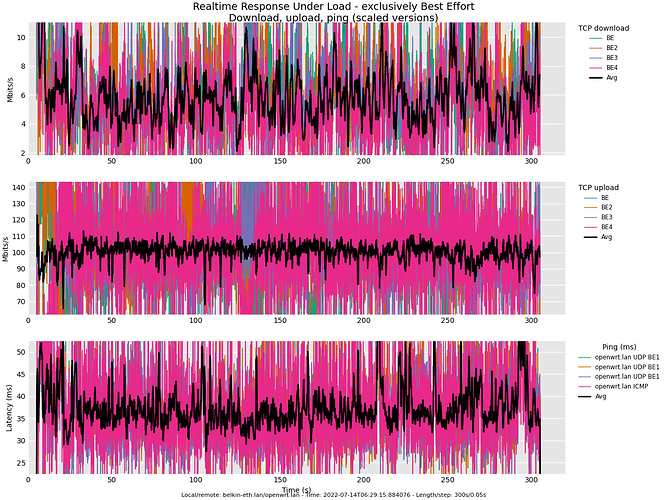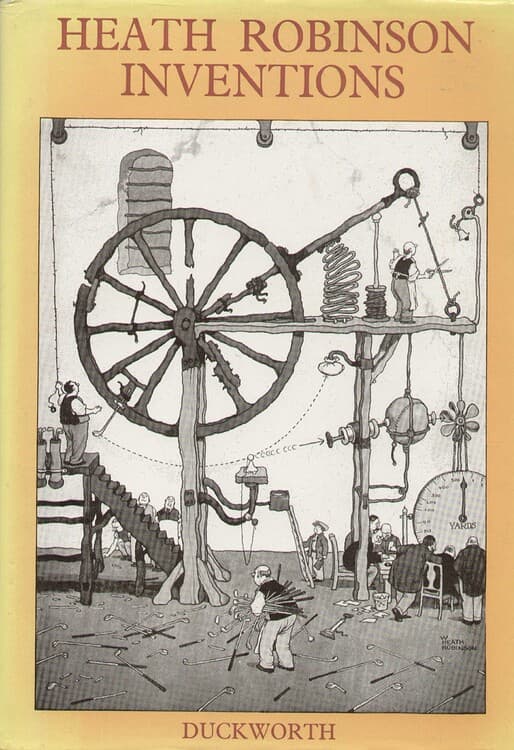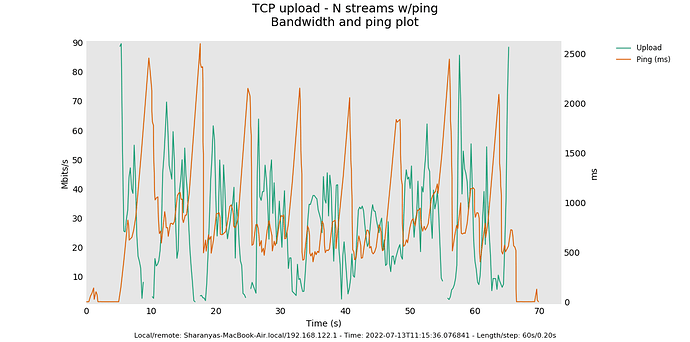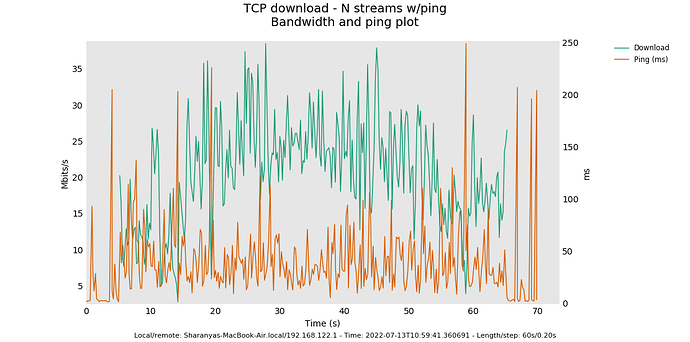@dtaht I ran
Flent tests:
rrul_be,
tcp_ndown (4 streams),
tcp_nup (4 streams)
Servers:
Local (Netperf and irtt running in Router/AP),
Remote (mumbai.starlink.taht.net)
Router/AP: Belkin RT3200 running OpenWrt 22.03.0-rc5
ISP: Airtel India, GPON Fiber, PPPoE, 40/40 Mbps Plan, IPv4 + IPv6
Location: (near) Chennai, Tamil Nadu, India
SQM on WAN: CAKE + layer_cake.qos, Download 42500, Upload 47500, Ingress options "ingress besteffort nat dual-dsthost", Egress options "egress diffserv4 nat dual-srchost", Ethernet with Overhead, Per Packet Overhead 44 bytes
WIFI Settings:
5 GHz, Channel 36, VHT20, TX Power 27 dBm, WPA2-PSK AES, 802.11w disabled, Beacon Interval 100, DTIM Interval 5
2.4 GHz, Channel 11, HT20, TX Power 20 dBm, WPA2-PSK AES, 802.11w disabled, Beacon Interval 100, DTIM Interval 5
Client: 2017 Macbook Air (Intel x86_64)
OS: macOS 12.4 Monterey
WiFi Card: Broadcom BCM43xx
Client in different room from Router/AP, with Brick wall between them.
Tested over SSH.
VNC not connected during tests.
Client RSSI measured in Router/AP:
2.4 GHz: -66 dBm (Noise -91 dBm)
5 GHz: -84 dBm (no noise info)
Router RSSI measured in Client:
2.4 GHz: -66 dBm (Noise -89 dBm)
5 GHz: -71 dBm (Noise -101 dBm)
Flent data files, log files and output images (only for rrul_be tests) at https://www.dropbox.com/sh/yuoy84klujqs9ld/AAAFAYebsQfArJT7MRPoe-GLa?dl=0




